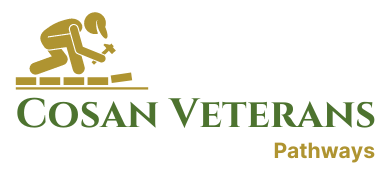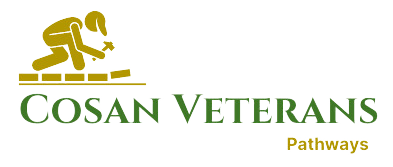V.A. HOME LOANS: A SOLUTION FOR MILITARY HOUSING
Everybody needs the comfort of home, where they can be a family and be themselves. While a home is an attainable goal for a regular person with a steady job, it is not easy for military personnel. These people who had to leave their families behind to serve their country often forget to save money to buy a home and are often forced to settle in the private housing provided by the Military. These houses are usually in terrible condition due to a lack of maintenance. Complaints about mold, poor wiring, and flooding are familiar stories in private housing.
However, everything is not as wrong as it sounds. There are several benefits. Veteran benefits for military families can take advantage of Energy Efficient Mortgages, Basic Allowance for Housing, VA Certificate of Eligibility, and V.A. Home loans, some of the schemes designed to help military families.
WHAT IS THE STORY?
On February 13, 2019, Senate Armed Services subcommittees on Readiness and Management and Personnel held a hearing in which several military families came forward to discuss the toxic slum-like living condition in the privately managed base housing communities. They described their situation as inescapable, decrepit, and dangerous. The families pointed out several issues, such as black mold, lead, infestations of vermin, flooding, radon, and faulty wiring.
In 2018, a survey was conducted by The Military Family Advisory Network in which more than 16000 families participated. The study concluded that the Housing conditions at private housing companies were terrible, with over 56% of the participants rating it either “Negative” or “Very Negative.”
THE GRUESOME EXPERIENCE OF A MILITARY MOM (SOURCE: WASHINGTON POST)
Speaking to Washington Post, one military mom who resides at MacDill Air Force Base in Tampa shared her troublesome story. Rebecca (Name changed) moved to the Air Force Base in July. And soon, their health problems kicked in. One of her children was rushed into the E.R. with breathing problems, and another suffered from Pneumonia. Spores ringed one of her air, and she told the Washington Post that the company responsible, Harbor Bay, sanded through the mold instead of sub-flooring, which bombarded their place with Toxic Spores. The family was forced to move to a hotel two months later. Their youngest daughter was diagnosed with chronic inflammatory response syndrome caused by a water-damaged home. Their daughter was also diagnosed with breathing troubles.
V.A. HOME LOANS
V.A. home loans are the least delinquent mortgage due to their adherence to accurate lending guidelines throughout history. Debt-to-income ratio is one of the strong pillars of this. The debt ratio is the percentage of overall monthly debt divided by gross family income, i.e., if a family’s monthly payment adds up to $3000 and has an income of $8000, then the debt ratio is 37%. Over the years, V.A. has set a maximum debt ratio of 41%. Other than housing payments, the debt ratio must also include monthly obligations such as credit card payments, installment loans, and leases, and other debt like alimony and child support but Utility payments, cell phone, food, and other daily essentials.
In short military families should take advantage of this fantastic program that offers the solution to the problem that has haunted them for years.
V.A. ENERGY EFFICIENT MORTGAGES (EEM)
Department of Veterans Affairs introduced a loan program, V.A. Energy Efficient Mortgage (EEM), to help homeowners finance their home’s energy-efficiency improvements. Depending on your project, you can borrow anywhere from $3000 – $6000. For a $3000 loan, you need to submit documentation of improvement costs or contractor bids; for a loan of $6000, the projected energy savings should be higher than the increase in mortgage payments. EEM is available for a project of any size, making it a better choice than loans available via the FHA and Fannie Mae or Freddie Mac.
BASIC ALLOWANCE FOR HOUSING (BAH)
Basic Allowance for Housing (BAH) is an allowance paid for qualified military personnel who could not find government housing. Unlike EEM, the amount you can borrow via BAH is based on rank, years of service, dependent status, and location. In other words, members with high positions and more experience will receive more money via BAH. Also, BAH is higher for major metropolitan areas or regions with higher living costs. BAH rates are calculated annually.
CERTIFICATE OF ELIGIBILITY (COE) IS YOURS AND WELL EARNED.
To obtain the above loan, you must produce a Certificate of Eligibility. The COE helps the lender verify that you are qualified for a VA-backed loan. You can apply online or ask your lender for a Certificate of Eligibility. Most of them have access to the Web LGY system. Once you submit your eligibility, this application can produce a COE in a few seconds.
POSSIBLE SOLUTIONS: G.I. BILL
The G.I. bill passed in 1944 gives special entitlement to returning service members. The law recognized that soldiers don’t have the time to save up to buy a house during their active duty. This bill provided service members to own a home with little down payment as opposed to the 20 to 30 percent that the real estate companies demanded at the time.
FINAL THOUGHTS
Good housing condition is a fundamental right of an individual. Unfortunately, it has been distant dream for most service members. It is not because no help is available but because not all of them know it. Above mentioned are just some policies that can help military families, and we hope you take full advantage of them.


